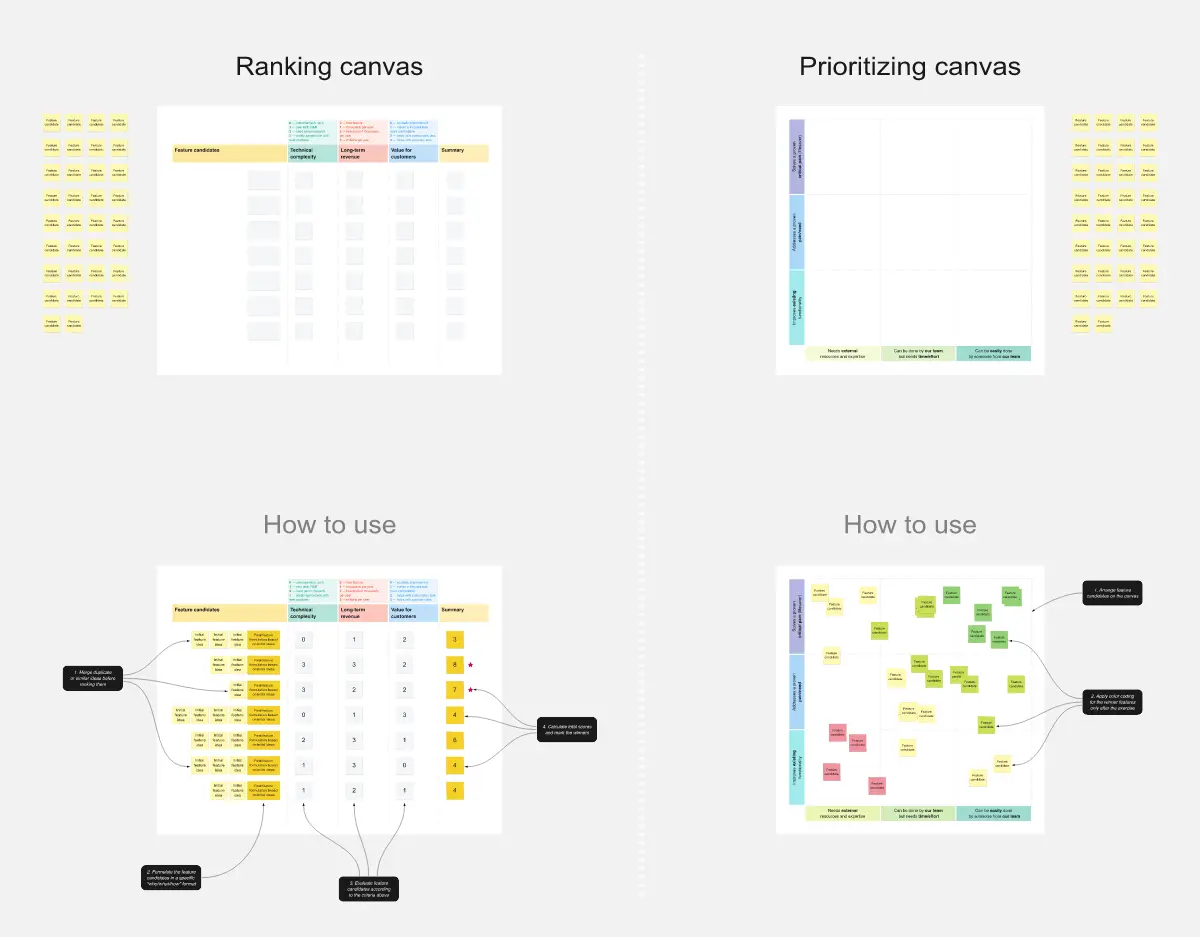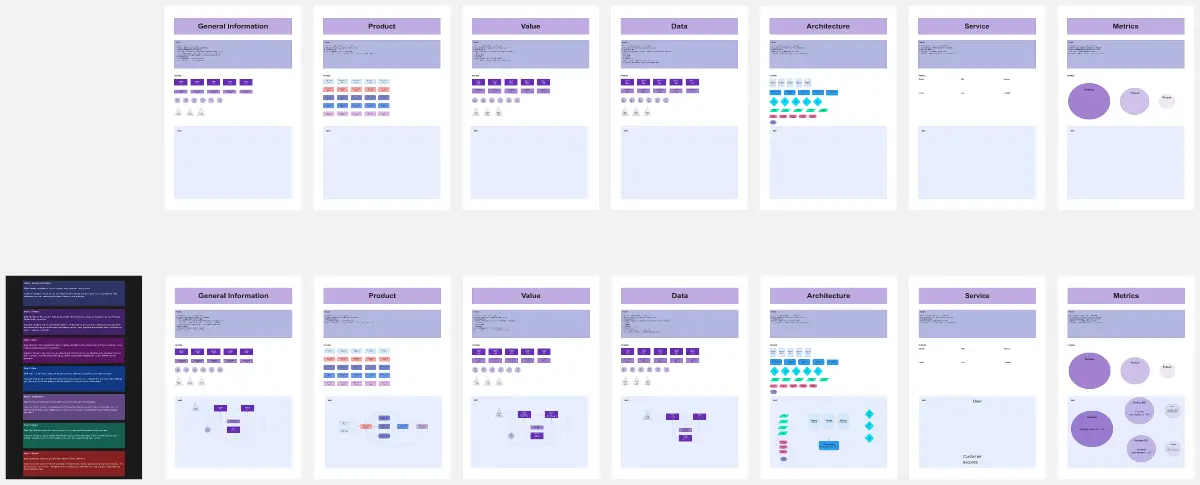Product Strategy Map
A well-defined product strategy is crucial to build an effective outcome for your target audience and, as a result, your business. This Product Strategy Map Template was created to support product professionals in defining and executing a comprehensive product strategy from start to finish.
Who can use the Product Strategy Map Template
The Product Strategy Map Template is specifically designed for product teams, including product managers and owners, working with cross-functional teams from Engineering, Design, Data Science, and Marketing. It serves as a collaborative tool to ideate and align on the key components of a product strategy.
Whether you are a seasoned product professional or new to the field, this template provides a structured approach to define and execute a product strategy that aligns with both your company's broader objectives and the specific needs of your target market.
How to use the Product Strategy Map Template
A product strategy map is a visual tool that facilitates ideation and alignment on the key components of a product strategy. Here are step-by-step instructions for you and your team to get the most out of this framework:
Identify key stakeholders. Use the Stakeholder section to account for partners who play a role in your product strategy and their associated functions using the provided table. This ensures that you invite the right people to contribute throughout the product strategy development process.
(Optional) Break the ice with your stakeholders. Use the optional icebreaker to foster an open, transparent working relationship with your product partners. This is a fun and easy exercise that works for groups of all sizes. And by the end, you should have a wide mix of practical, unusual, and silly ideas. This activity is a great way to warm up your brain and get comfortable with your team before diving into a serious brainstorming session.
Prepare essential information. In section one, collect important reference points about your company, customers, and competitors. Complete the tables around your organization’s mission, vision, and business goals, as well as the demographics, needs, and pain points of your target customers. Conduct thorough market research to gain insights into your competitors and their unique value propositions.
Start building your product strategy. In section two, define where your product will play, how it will win, and how success will be measured. Identify the problem and opportunity spaces where your product can add value unique to your target customers. Leverage the growth flywheel concept to identify strategic pillars that will drive market acceptance of your product. Finally, determine your go-to-market strategies, channel strategies, and monetization strategies.
Socialize your strategy and get buy-in. In section three, create a communication strategy plan, including goals, methods, target audience, content, frequency, and responsible parties. Create an action and decision log to track progress and accountability. Conduct a pre-mortem exercise to anticipate potential risks and develop mitigation plans. Utilize additional resources provided to enhance your understanding of product strategy best practices.
I hope you find this resource helpful as you develop your next product or feature! Please leave feedback below so I can continue improving this template to make it more effective for others.
Categories
Similar templates






